Step into the mesmerizing world of the majestic Bald Eagle, a captivating marvel of nature that roams the skies with awe-inspiring grace.
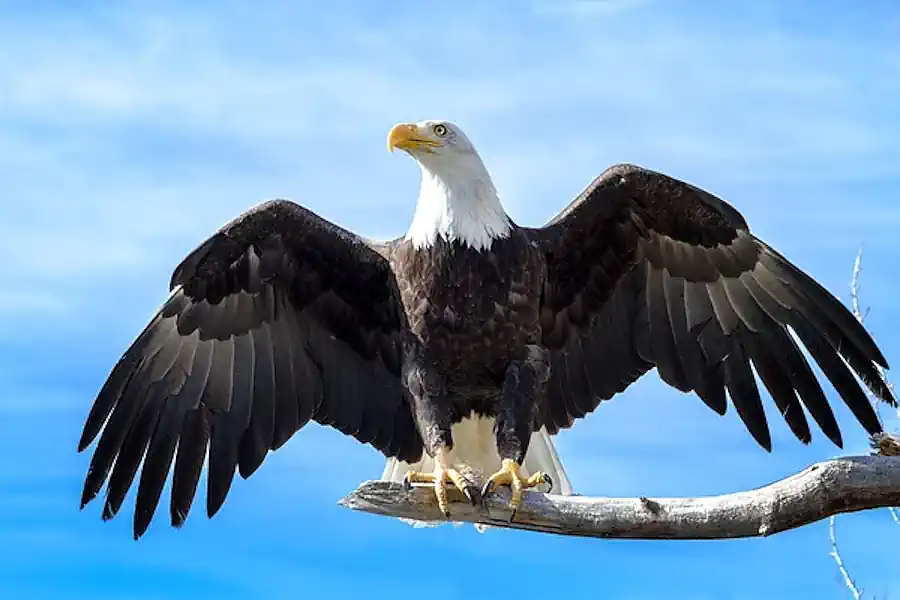
With its piercing gaze, snow-white head, and striking yellow beak, this regal bird commands attention and admiration. Residing primarily in North America, the Bald Eagle symbolizes strength, freedom, and resilience. As we explore the wonders of this iconic creature, we unravel its intriguing details, from its impressive wingspan to its exceptional hunting skills. Prepare to be enchanted by the magnificence of the Bald Eagle, a true testament to the beauty and grandeur of the natural world.
Physical Description
The Bald Eagle, also known as Haliaeetus leucocephalus, is an impressive bird known for its majestic appearance. They are one of the largest birds in North America, with a wingspan ranging from 6 to 7.5 feet and a weight of 10 to 14 pounds. Their body length is around 3 feet, making them a truly impressive sight to behold.
In terms of coloration, adult Bald Eagles have a distinct white head and tail, contrasting against their dark brown body. Their beak and talons are a bright yellow, adding to their striking appearance. Juvenile Bald Eagles, on the other hand, have a mottled brown and white plumage which gradually changes as they mature. It takes about four to five years to acquire their iconic adult coloration.
Feathers play a crucial role in the life of a Bald Eagle. They have a broad, strong wingspan that allows them to soar through the skies effortlessly. The feathers are specially designed to provide insulation and protection, enabling them to withstand extreme temperatures and harsh weather conditions. These majestic birds have over 7,000 feathers, and their feathers play a vital role in their hunting and survival instincts.
Habitat and Range
The Bald Eagle’s range encompasses vast areas of North America, including Canada, Alaska, and the contiguous United States. They are primarily found near bodies of water such as rivers, lakes, and coastal areas, as these habitats provide an abundant food source and suitable nesting sites. Bald Eagles also tend to prefer areas with tall trees that offer a vantage point for hunting and roosting.
Migration is an integral part of the Bald Eagle’s life cycle. While some populations are non-migratory, many eagles undertake long-distance journeys to take advantage of seasonal food sources and breeding grounds. They follow specific migration patterns, with individuals from the northern regions moving south for the winter to find open water and food. The return migration in spring allows them to return to their nesting sites and raise their young in familiar territory.
Diet and Feeding Habits
Bald Eagles are apex predators that primarily feed on fish. Their diet mainly consists of live or freshly dead fish, which they skillfully catch using their sharp talons. They are opportunistic hunters and will also feed on waterbirds, small mammals, and carrion when available. They often scavenge near waterways, looking for fish that have died or been injured and are skilled at stealing food from other predators like ospreys or other eagles.
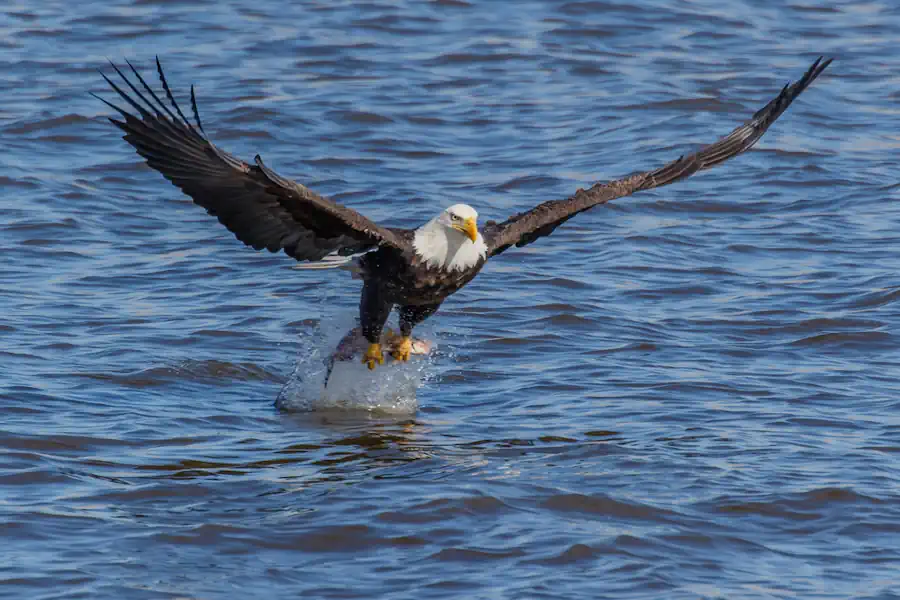
When hunting, Bald Eagles employ a range of techniques. They may swoop down from high perches, perform impressive aerial dives, or even plunge into the water to snatch prey with their sharp talons. Their powerful beak enables them to tear apart their food into manageable pieces. Once they have caught their prey, they will bring it back to a perch or their nest to consume. Bald Eagles are known for their impressive feeding behavior, often tearing apart their catch with great precision and efficiency.
Behavior and Social Structure
Bald Eagles are solitary birds but are not entirely antisocial. They establish territories to ensure a sufficient food supply and suitable nesting areas. These territories can range from a few square miles to up to hundreds of square miles, depending on the availability of resources. The boundaries of their territories are often marked with their vocalization and aerial displays, which serve as a warning to others to stay away.
Courtship and mating rituals play a significant role in the life of a Bald Eagle. These rituals involve intricate aerial displays, with the pair soaring, diving, and locking talons mid-air. Once a pair bond has been established, they will build and defend their nest together. The nests, known as eyries, are built on tall trees near bodies of water and can reach enormous sizes, often weighing tons due to years of continued construction and reuse.
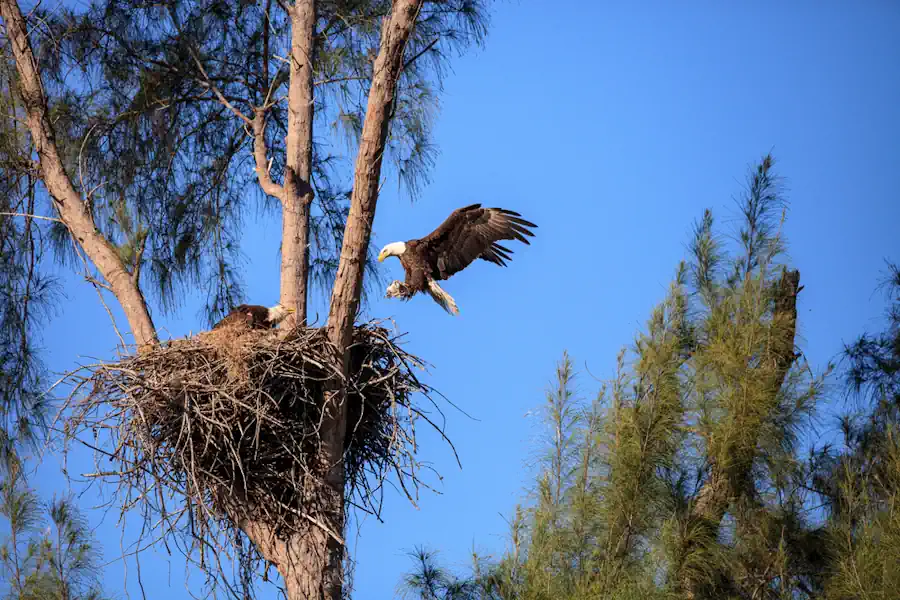
Parental care is an essential aspect of the Bald Eagle’s social structure. Both the male and female contribute to the incubation and rearing of their young. They take turns incubating the eggs and then caring for and feeding the chicks once they hatch. The parents’ commitment to their offspring is evident, as they invest months of effort to ensure the survival and growth of their young.
Adaptations
The Bald Eagle possesses several remarkable adaptations that contribute to its survival and success as a predator.
One of their key adaptations is their powerful beak and talons. Their beak is hooked and sharp, allowing them to grip and tear their prey apart with ease. The strong talons, equipped with sharp, curved claws, enable them to catch and hold onto their prey securely. These adaptations are crucial for capturing and handling live fish or tearing apart carcasses.
Excellent eyesight is another defining feature of the Bald Eagle. With eyes four times stronger than those of humans, they have remarkable long-distance vision. This exceptional eyesight enables them to spot fish swimming near the water’s surface and detect potential threats or prey from great distances, even while soaring high in the sky.
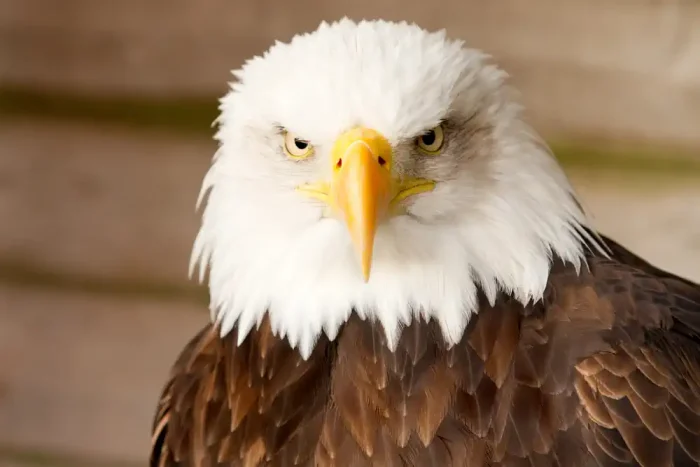
Winged migration is an impressive adaptation displayed by Bald Eagles. They can travel long distances, covering vast areas during their migratory journeys. This ability allows them to take advantage of different habitats throughout the year, ensuring a continuous supply of food and suitable nesting sites. Flying is an essential part of their survival strategy, enabling them to navigate their way across vast landscapes.
Conservation Status
The Bald Eagle has faced significant historical declines due to various factors, including habitat loss, hunting, and contamination from chemical pollutants. By the mid-20th century, their population dwindled to dangerously low numbers, and they were listed as an endangered species in the United States.
Conservation efforts, including the ban on the pesticide DDT, habitat protection, and captive breeding programs, have contributed to the recovery of the Bald Eagle population. Today, their numbers have rebounded, and they have been downlisted to a species of least concern. While still monitored and protected, their conservation status is a testament to the success of conservation efforts and the importance of preserving their habitats.
Symbolism and National Emblem
The Bald Eagle holds great cultural significance and is widely regarded as a majestic and powerful symbol. It has been the national bird and emblem of the United States since 1782, representing strength, freedom, and patriotism.

As a national symbol, the Bald Eagle can be found in various forms of art, literature, and national iconography. It appears on U.S. currency, government seals, flags, and numerous official emblems. This iconic bird represents the resilience and spirit of the United States, often associated with its natural beauty and the principles for which the country stands.
Interactions with Humans
While the Bald Eagle is revered and cherished by many, it has faced several threats caused by human activities.
One of the primary threats to Bald Eagles is habitat loss. The destruction and degradation of their natural habitats due to human development can limit their food sources and nesting options. Protecting and preserving their habitat is essential for the long-term conservation of this remarkable species.
Fishing has both positive and negative implications for Bald Eagles. They rely heavily on fish as a primary food source. However, interactions with fishing activities can sometimes lead to accidental injuries or deaths. Bald Eagles are known to scavenge fish from unattended fishing gear, which can result in entanglement or ingestion of fishing lines and hooks. Responsible fishing practices and minimizing human disturbances near their foraging areas can help mitigate these risks.
In captivity, Bald Eagles are cared for by conservation organizations and wildlife rehabilitation centers. These facilities play a crucial role in rehabilitating injured or orphaned eagles, with the aim of releasing them back into the wild. Captive Bald Eagles also serve as ambassador animals, educating the public about the importance of conservation and raising awareness about the species’ conservation needs.
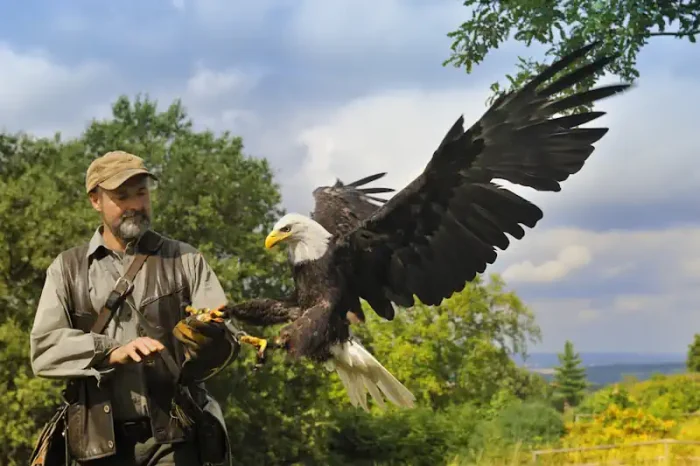
Interesting Facts
- Bald Eagles are often mistaken for Golden Eagles due to their similar appearance. However, Bald Eagles have a distinct white head, while Golden Eagles have a golden patch on their nape.
- When diving to catch prey, Bald Eagles can reach speeds of up to 100 miles per hour (160 km/h), making them one of the fastest animals in the sky.
- A Bald Eagle’s nest can measure up to 4-5 feet in diameter and reach weights of over 1 ton. They often reuse and reinforce their nests each breeding season, resulting in massive structures.
Final Thoughts
The Bald Eagle is a remarkable species that exemplifies strength, beauty, and resilience. Its physical description, habitat preferences, and hunting techniques make it a majestic sight to behold. As an apex predator, it plays a vital role in maintaining the ecological balance of its habitats.
Conservation efforts have been instrumental in the recovery of the Bald Eagle population, highlighting the importance of preserving their habitats, mitigating threats, and educating the public. As a symbol of national pride, the Bald Eagle serves as a powerful reminder of the need to protect and cherish our natural world.
Appreciating the remarkable abilities and adaptations of the Bald Eagle reminds us of the wonder and diversity found within nature, as well as our responsibility to ensure the survival of such magnificent species for generations to come.
